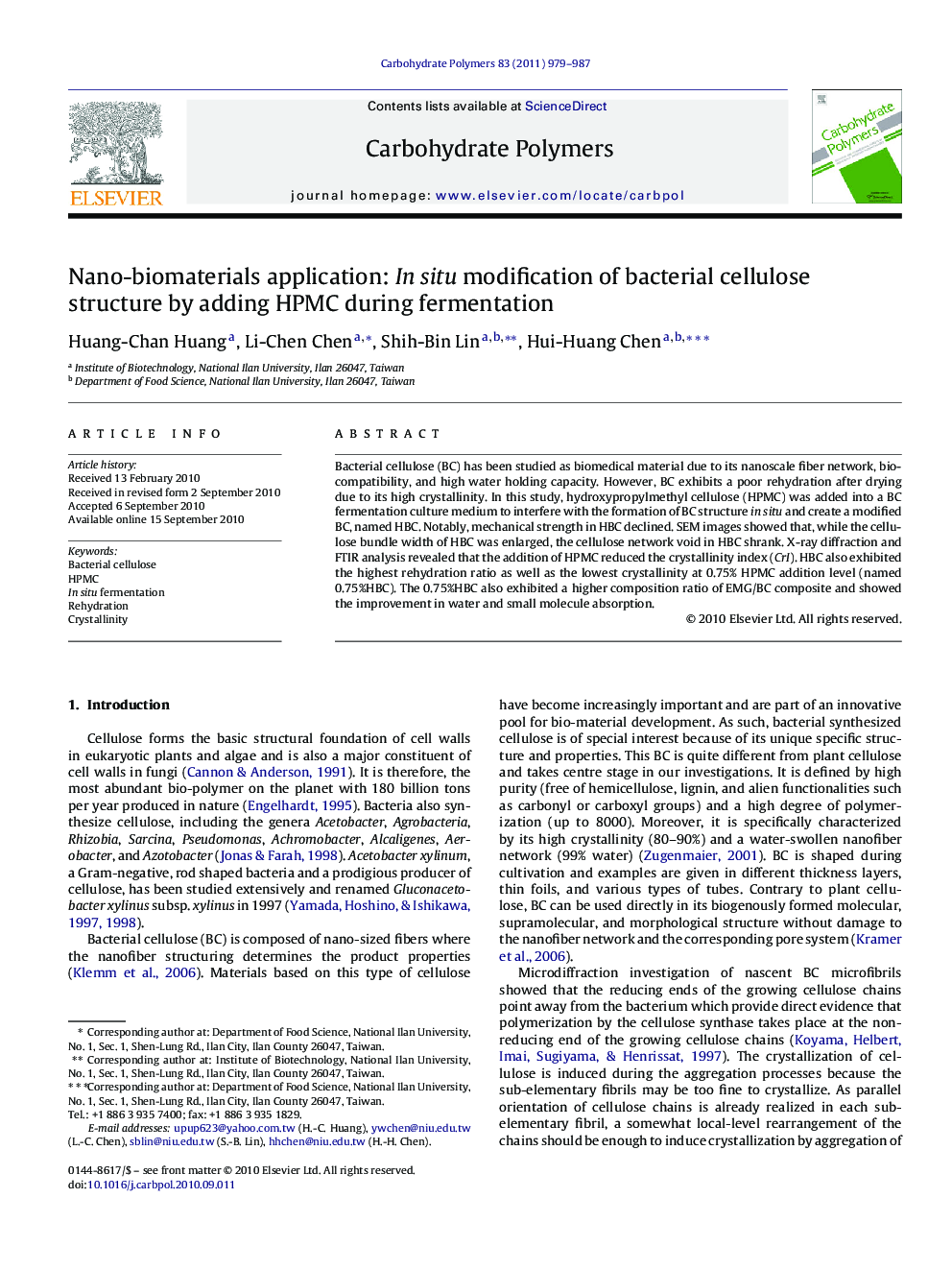| Article ID | Journal | Published Year | Pages | File Type |
|---|---|---|---|---|
| 1387116 | Carbohydrate Polymers | 2011 | 9 Pages |
Bacterial cellulose (BC) has been studied as biomedical material due to its nanoscale fiber network, biocompatibility, and high water holding capacity. However, BC exhibits a poor rehydration after drying due to its high crystallinity. In this study, hydroxypropylmethyl cellulose (HPMC) was added into a BC fermentation culture medium to interfere with the formation of BC structure in situ and create a modified BC, named HBC. Notably, mechanical strength in HBC declined. SEM images showed that, while the cellulose bundle width of HBC was enlarged, the cellulose network void in HBC shrank. X-ray diffraction and FTIR analysis revealed that the addition of HPMC reduced the crystallinity index (CrI). HBC also exhibited the highest rehydration ratio as well as the lowest crystallinity at 0.75% HPMC addition level (named 0.75%HBC). The 0.75%HBC also exhibited a higher composition ratio of EMG/BC composite and showed the improvement in water and small molecule absorption.
